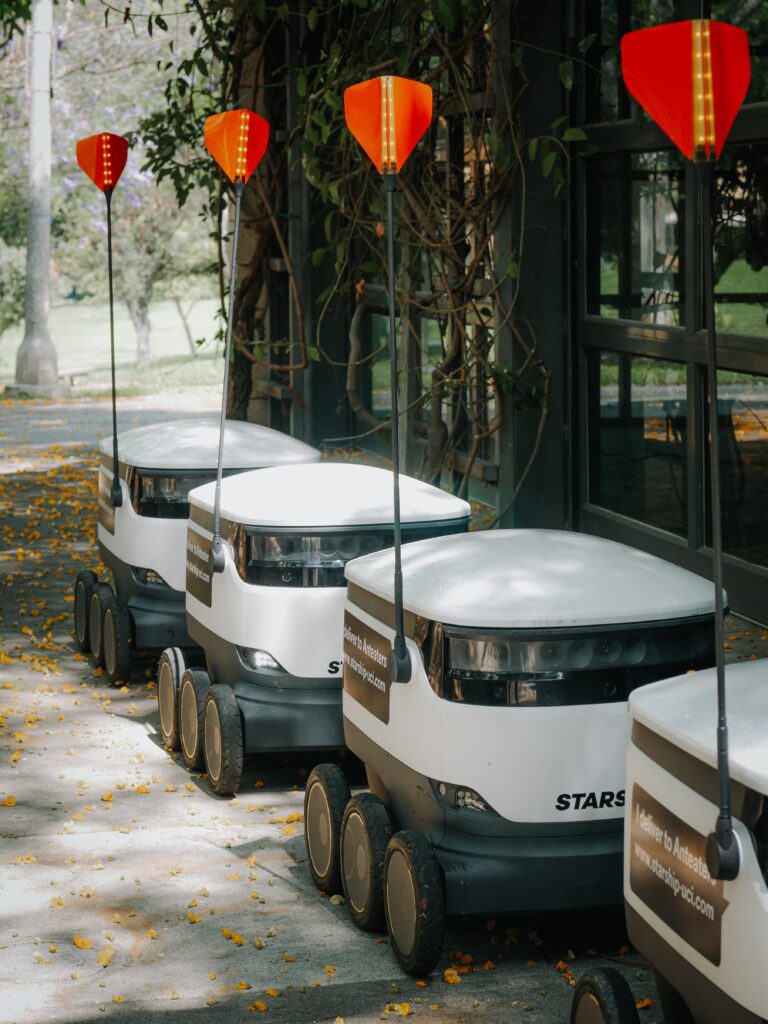The Future of Autonomous Delivery in White Glove Services: Optimizing Visibility, Customer Experience, and Risk Management
Introduction:
In today’s rapidly evolving supply chain and logistics landscape, the mainstreaming of supply chain visibility has become crucial for businesses. According to Demi Obayomi, Vice President of Sapphire Ventures, companies now demand real-time visibility throughout the entire journey, including the location and condition of goods, especially for temperature-sensitive items. This heightened demand for visibility is transforming the white glove delivery sector, where customer experience, comprehensive risk management, optimization to eliminate waste, and data interoperability play pivotal roles. In this blog post, we will explore the future of autonomous delivery in white glove services, focusing on the key areas mentioned by Obayomi and discussing how this technology can optimize the industry.
The Role of Autonomous Delivery in Enhancing Visibility:
Autonomous delivery, enabled by technologies like autonomous vehicles and drones, has the potential to revolutionize white glove services. With autonomous vehicles, businesses can achieve real-time tracking and monitoring of shipments throughout the delivery process, ensuring enhanced visibility for customers. The integration of sensors and IoT devices allows for continuous updates on the location, condition, and even temperature of goods, addressing the needs of temperature-sensitive items. By leveraging autonomous technologies, white glove delivery providers can deliver an unprecedented level of transparency and real-time information to customers.
Elevating the Customer Experience
Customer experience is becoming a critical factor for the success of logistics businesses. With the rise of digital-first merchandisers, customers now expect constant updates on the status of their orders. Autonomous delivery plays a significant role in meeting these expectations by providing accurate tracking information, estimated arrival times, and real-time notifications. By leveraging autonomous vehicles and drones, white glove delivery services can offer customers a seamless and transparent experience, thereby building trust and loyalty.
Comprehensive Risk Management:
In today’s unpredictable world, risk management has gained utmost importance in supply chain operations. The pandemic has highlighted the need for businesses to manage risks effectively to ensure resilience. Autonomous delivery can contribute to comprehensive risk management by providing real-time insights into the status of manufacturers, raw material flow, and potential disruptions in the supply chain. By monitoring these factors, white glove delivery services can proactively identify and mitigate risks, ensuring smooth operations and minimizing the impact of unforeseen events.
Efficiency and optimization are crucial aspects of logistics operations. Traditional logistics often face challenges such as empty trucks running on inefficient routes. However, autonomous delivery presents an opportunity to optimize logistics operations by leveraging advanced algorithms and real-time data. By optimizing delivery routes, matching demand with available capacity, and minimizing empty runs, white glove delivery providers can significantly reduce waste, improve operational efficiency, and reduce costs.
Optimization to Eliminate Waste:
Data Interoperability for Seamless Operations:
In the current landscape, shippers and service providers often rely on multiple information systems, which can hinder seamless data sharing and collaboration. Data interoperability, achieved through standardized data formats and integration of various applications, becomes paramount for efficient operations. By connecting the different components of the supply chain ecosystem, autonomous delivery can facilitate smooth data exchange, enabling stakeholders to make informed decisions, streamline operations, and enhance overall performance.
Statistics
According to a recent report by SupplyChainBrain.com, the demand for real-time supply chain visibility has surged, driven by customers’ expectations for transparency and the ability to track goods throughout the journey. The report highlights that logistics is a service business, and the customer experience is critical for survival. Shoppers are increasingly willing to sever ties with retailers due to lost or late orders. Furthermore, risk management has become a top priority for companies, with the pandemic emphasizing the need for resilience. Optimizing routes and eliminating waste is a significant challenge in logistics, with companies seeking ways to maximize efficiency. Finally, data interoperability is essential
Conclusion
The future of autonomous delivery in white glove services, particularly through the integration of autonomous vehicles, has significant implications for the interior design and office relocation industries in Southern California. As the demand for efficient and reliable logistics services continues to rise, these industries can leverage autonomous delivery to streamline operations, enhance customer experiences, and optimize the moving process.
For interior designers, autonomous delivery using advanced autonomous vehicles offers several benefits. By leveraging real-time tracking and efficient route optimization, designers can ensure the timely delivery of furniture, decor, and other design elements to their clients’ locations. The integration of autonomous technology in white glove delivery services enhances transparency, reliability, and communication, allowing designers to provide exceptional customer experiences and maintain strong client relationships.
Similarly, businesses planning to relocate or move offices can capitalize on the advantages of autonomous delivery. Autonomous vehicles can optimize delivery routes, minimize transit times, and eliminate inefficiencies such as empty runs. By leveraging autonomous technology, businesses can ensure smooth and timely transportation of office furniture, equipment, and supplies to their new locations, minimizing downtime and disruptions during the relocation process.
Moreover, autonomous delivery contributes to risk management for both interior designers and businesses seeking relocation. Real-time visibility into the status of deliveries and the ability to proactively address any supply chain disruptions or delays enables better risk mitigation strategies. This helps interior designers to effectively plan their projects and meet deadlines, while businesses can ensure a seamless transition without compromising productivity or customer service.
By embracing autonomous delivery in Southern California, the interior design and office relocation industries can unlock new opportunities for operational efficiency, cost optimization, and enhanced customer satisfaction. The integration of advanced autonomous vehicles in white glove delivery services aligns with the evolving needs of these industries, allowing them to stay competitive in a rapidly changing market.
In conclusion, the future of autonomous delivery holds great promise for the interior design and office relocation sectors in Southern California. By harnessing the potential of autonomous vehicles in white glove delivery, these industries can elevate their services, streamline operations, and create exceptional experiences for their clients and customers.


